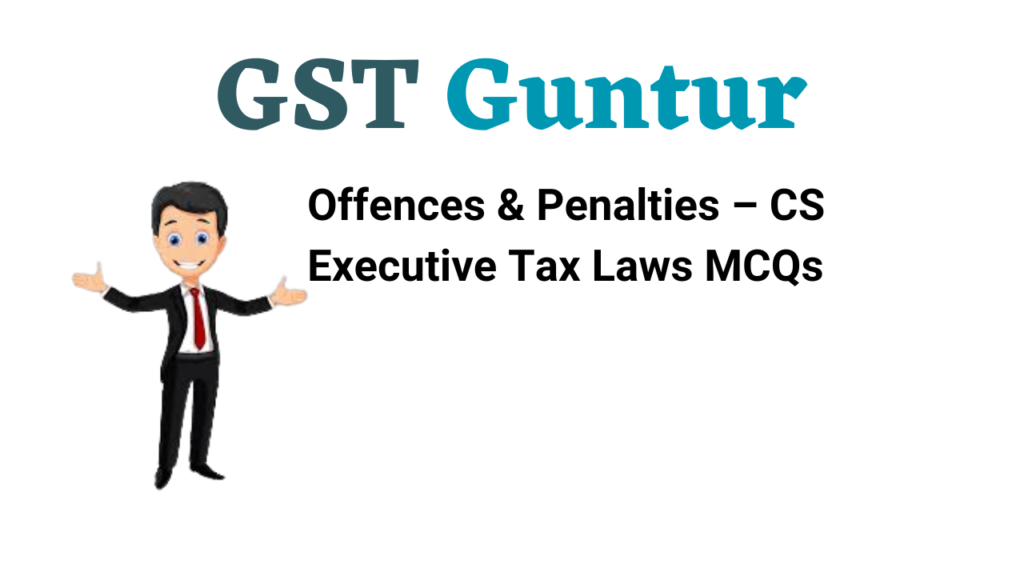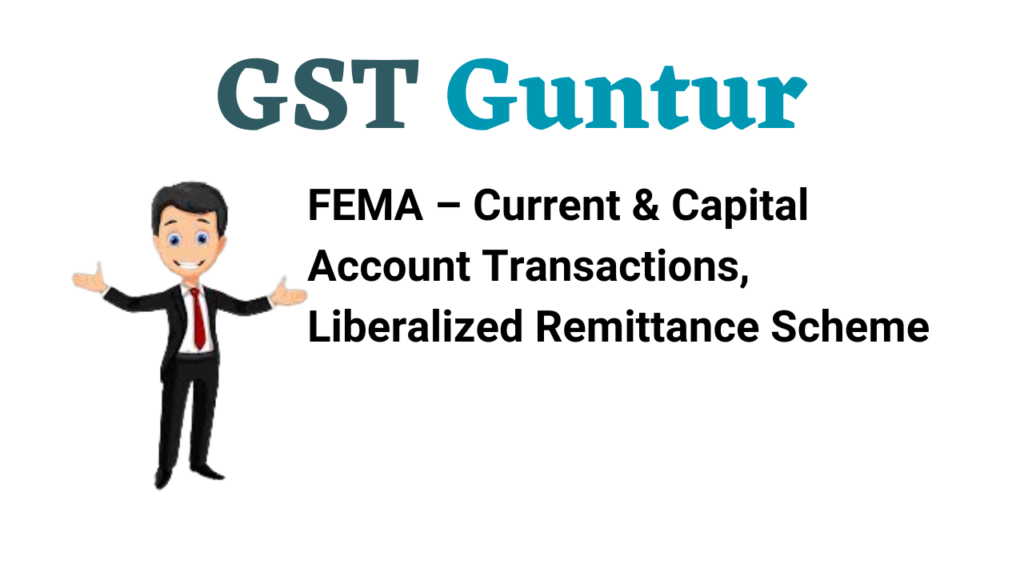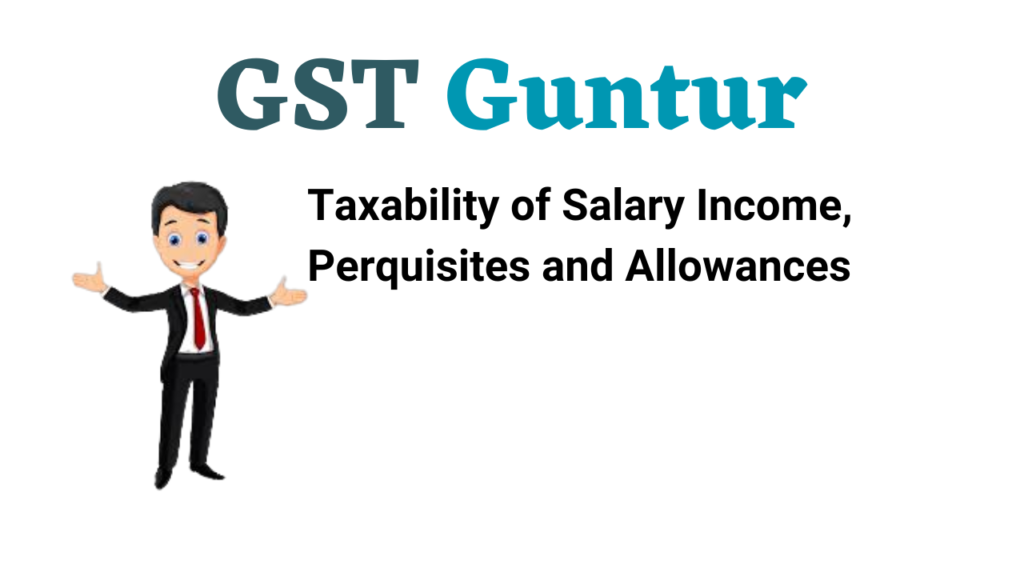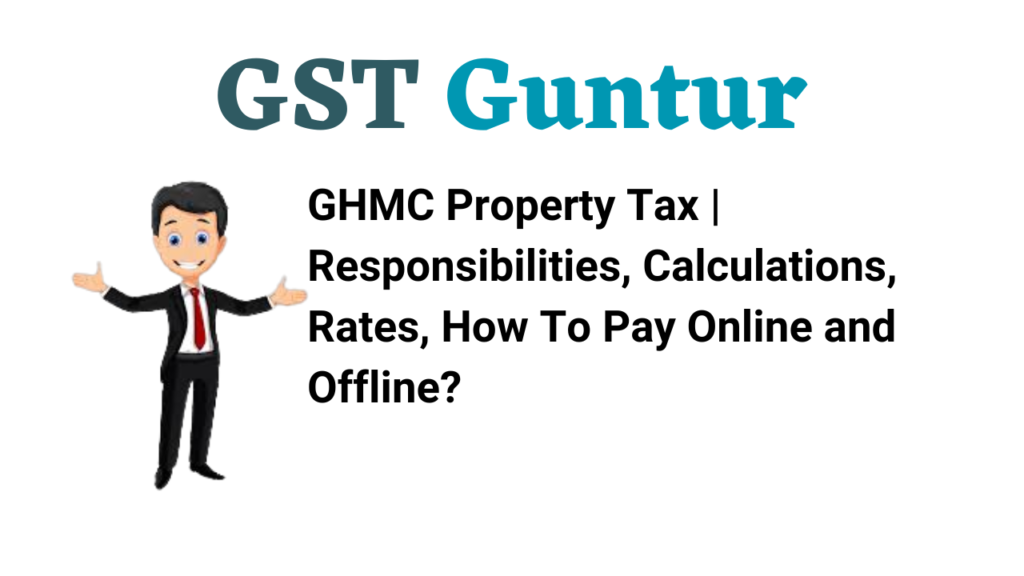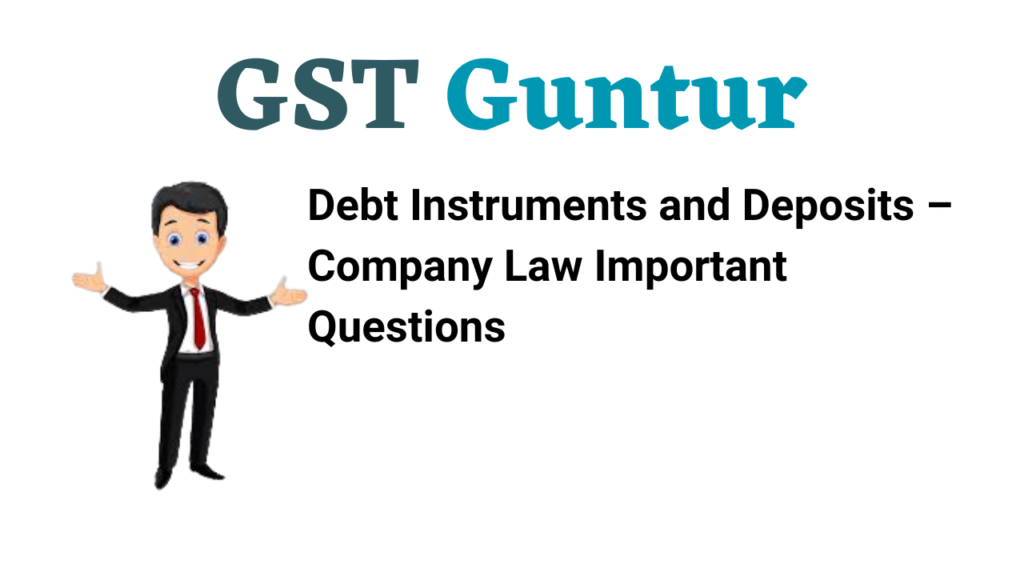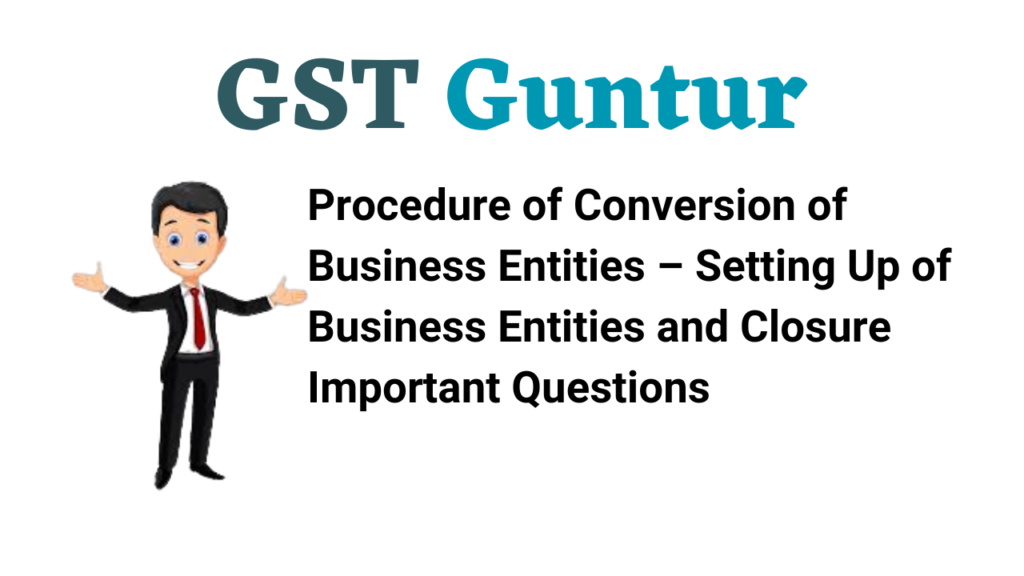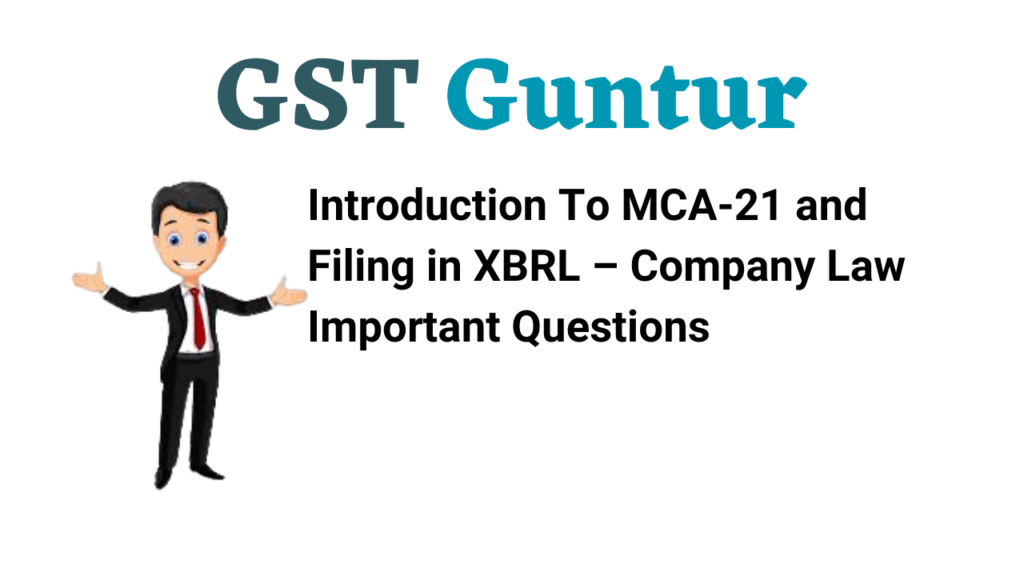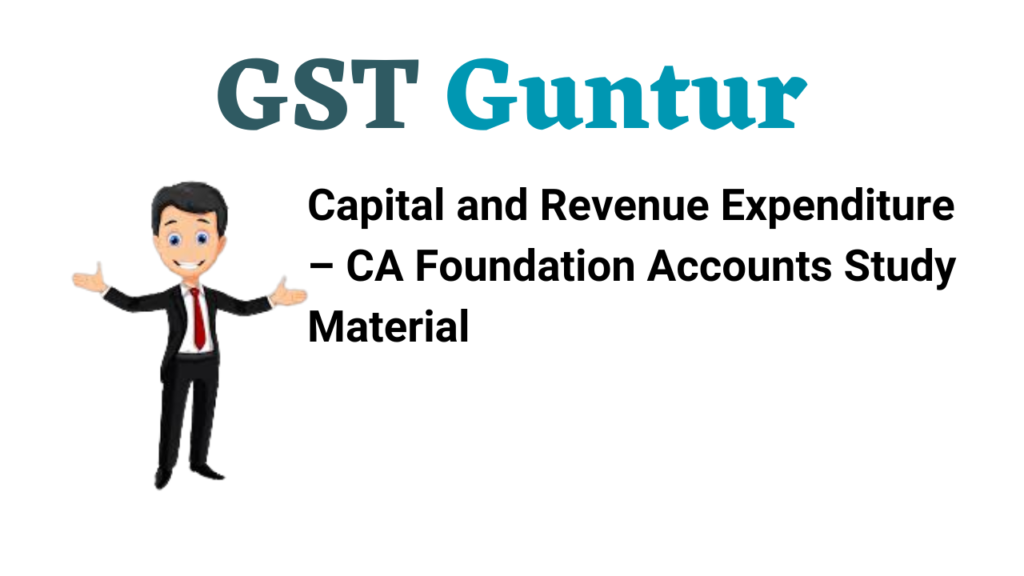FEMA – Current & Capital Account Transactions, Liberalized Remittance Scheme – Economic, Business and Commercial Laws Important Questions
Question 1.
Naresh, an Indian citizen, is interested in sending ₹ 10,000 to his sister residing in the USA as a birthday gift. Advice with reference to relevant provisions of the Foreign Exchange Management Act, 1999 and the rules
Answer:
Any person may sell or draw foreign exchange to or from an authorized person if such sale or Drawal is a current account transaction. However, such sell or draw foreign exchange can be made after complying with the Foreign Exchange Management (Current Account Transactions) Rules, 2000.
As per Rule 5 read with Liberalized Remittance Scheme, transactions p specified in Schedule III require approval of RBI. “Gift remittances” are covered in Schedule III. If the gift remittance exceeds US$ 2,50,000 prior f approval of RBI is required. In the given case, Naresh wants to remit ₹ 10,000 to his sister in the USA. If the rate of exchange is taken ₹ 65 per dollar then ₹ 10,000 = US$ 153.85. Since the amount to be remitted does not exceed US$ 2,50,000 prior approval of RBI is not required.
As per Liberalized Remittance Scheme, a resident individual can make a rupee gift to an NRI/PIO who is a relative of the resident individual by way of crossed cheque/electronic transfer.
Question 2.
Dinesh, an Indian citizen, wants to use his international debit card for the withdrawal of cash during his visit abroad. Advice with reference to relevant provisions of the Foreign Exchange Management Act, 1999 and the rules and regulations made thereunder. [Dec. 2009 (1 Mark)]
Answer:
Any person may sell or draw foreign exchange to or from an authorized person if such sale or Drawal is a current account transaction. However, such sell or draw foreign exchange can be made after complying with the FEM (Current Account Transactions) Rules, 2000.
As per Rule 7, the transactions do not require RBI approval if payment is made by a person by use of an International Credit Card, towards meeting expenses while such person is on a visit outside India. Thus, Dinesh can use his international debit card for the withdrawal of cash during his visit abroad.
Question 3.
Shyam, an Indian businessman, is interested in remitting US$ 8,000 for the purchase of a trademark/franchise in India. Advice with reference to relevant provisions of the Foreign Exchange Management Act, 1999 and the rules and regulations made thereunder. [Dec. 2010 (1 Mark)]
Answer:
As per Rule 5 of the FEM (Current Account Transactions) Rules, 2000, transactions specified in Schedule III require approval of RBI. “Remittance for purchase of trademark/franchise in India” is deleted from Schedule III. Thus, the transaction is permitted without prior approval of RBI.
Also if Shyam makes payment out of the Resident Foreign Currency account then also prior approval of RBI not required.
Question 4.
Rakesh, a person resident in India, is interested in extending an invitation to George, a person resident outside India, to stay as his guest while on a visit to India. Advice with reference to relevant provisions of the Foreign Exchange Management Act, 1999 and the rules and regulations made thereunder. [June 2011 (1 Mark)]
Answer:
There is no prohibition under the FEMA for making any payment in Indian rupee towards meeting expenses on account of boarding, lodging, and service-related thereto or travels to and from and within the India of a person resident outside who is on a visit to India. Thus, Rakesh can invite George, a person resident outside India, to stay as his guest while on a visit to India.
Question 5.
Anand desires to donate US$ 10,000 to Rotary International, an NGO in Chicago, USA. Advice with reference to relevant provisions of the Foreign Exchange Management Act, 1999 and the rules and regulations made thereunder. [June 2012 (1 Mark)]
Answer:
As per Rule 5 of the FEM (Current Account Transactions) Rules, 2000 read with Liberalized Remittance Scheme, transactions specified in Schedule III require approval of RBI. Drawal of foreign exchange for “gift & donation” is specified in Schedule III. If the foreign exchange to make a donation exceeds US$ 2,50,000 then prior approval of RBI is necessary. Therefore, Anand can obtain US $ 20,000 for making a donation to a charitable trust situated in South Korea without the prior approval of RBI.
Question 6.
Suresh desires to pay US$ 10,000 through an international credit card being the remittance out of lottery earnings. Advice with reference to relevant provisions of the Foreign Exchange Management Act, 1999 and the rules and regulations made thereunder. [June 2012 (1 Mark)]
Answer:
As per Rule 3 of the FEM (Current Account Transactions) Rules, 2000, transactions specified in Schedule I are totally prohibited. “Remittance out of lottery winnings” is specified in Schedule I. Thus, Suresh cannot pay US$ 10,000 being the remittance out of lottery earnings.
Question 7.
Write a short note on Current Account Transactions. [Dec. 2014 (3 Marks)]
Answer:
(a) Meaning of Current Account Transaction (Section 2(j):- The term current account transaction has been defined to mean a transaction other than a capital account transaction.
Current Account Transactions includes
- Payments are due in connection with foreign trade, other current business, services, and short-term banking and credit facilities in the ordinary course of business.
- Payments are due as interest on the loan and as net income from investments.
- Remittances for living expenses of parents, spouse, and children residing abroad.
- Expenses in connection with foreign travel, education, and medical care of parents, spouse, and children.
(b) Provision regarding Current Account Transactions [Section 5]: Any person may sell or draw foreign exchange to or from an authorized person if such sale or Drawal is a current account transaction. However, such sell or draw foreign exchange can be made after complying with the FEM (Current Account Transactions) Rules, 2000.
(c) Categories of Current Account Transaction: As per this rule current account transaction are divided into the following categories:
- Transaction for which Drawal of foreign exchange is prohibited. [Rule 3]
- Transaction for which foreign exchange can be drawn with prior approval of Central Government. [Rule 4]
- Transaction for which foreign exchange can be drawn with prior approval of RBI. [Rule 5]
Question 8.
How much foreign exchange is available to a person going abroad on emigration? [Dec. 2015 (3 Marks)]
Answer:
(a) As per Rule 5 of the Schedule II of the FEM (Current Account Transactions) Rules, 2000 read with Liberalized Remittance Scheme, the exchange facilities for emigration not exceeding US$ 2,50,000 do not require prior approval of RBI.
(b) As per Liberalized Remittance Scheme, a person wanting to emigrate can draw foreign exchange from AD Category-I & Category-II up to the amount prescribed by the country of emigration or US$ 2,50,000.
(c) Any remittance above the prescribed limit will require prior approval of RBI.
Question 9.
What are current account transactions under Foreign Exchange Management Act, 1999? [Dec. 2017 (5 Marks)]
Answer:
(a) Meaning of Current Account Transaction (Section 2(j):- The term current account transaction has been defined to mean a transaction other than a capital account transaction.
Current Account Transactions includes
- Payments are due in connection with foreign trade, other current business, services, and short-term banking and credit facilities in the ordinary course of business.
- Payments are due as interest on the loan and as net income from investments.
- Remittances for living expenses of parents, spouse, and children residing abroad.
- Expenses in connection with foreign travel, education, and medical care of parents, spouse, and children.
(b) Provision regarding Current Account Transactions [Section 5]: Any person may sell or draw foreign exchange to or from an authorized person if such sale or Drawal is a current account transaction. However, such sell or draw foreign exchange can be made after complying with the FEM (Current Account Transactions) Rules, 2000.
(c) Categories of Current Account Transaction: As per this rule current account transaction are divided into the following categories:
- Transaction for which Drawal of foreign exchange is prohibited. [Rule 3]
- Transaction for which foreign exchange can be drawn with prior approval of Central Government. [Rule 4]
- Transaction for which foreign exchange can be drawn with prior approval of RBI. [Rule 5]
Question 10.
Dr. Gupta, an Indian national, residing in Thailand and wanted to avail foreign exchange facility up to USD 2,00,000 only. Whether he can do so? Explain the relevant provisions of the Foreign Exchange Management Act, 1999 in this respect.
Answer:
Under the Liberalized Remittance Scheme (LRS), Authorized Dealers may freely allow remittances by resident individuals up to US$ 2,50,000 per Financial Year (April-March) for any permitted current or capital account transaction or a combination of both.
The above scheme is available to all resident individuals including minors.
Thus, Dr. Gupta, an Indian national can avail foreign exchange of US$ 2,00,000 by complying with the provisions of the above scheme.
Question 11.
Point out the prohibited transactions under the Liberalised Remittance Scheme. s [Dec. 2019 (4 Marks)]
Answer:
The remittance facility under the Liberalized Remittance Scheme is not available for the following:
- Remittance out of lottery winnings.
- Remittance of income from racing/riding etc. or any other hobby.
- Remittance for purchase of lottery tickets, banned/proscribed magazines, football pools, sweepstakes, etc.
- Payment of commission on exports made towards equity investment in Joint Ventures/Wholly Owned Subsidiaries abroad of Indian companies.
- Remittance of dividend by any company to which the requirement of dividend balancing is applicable.
- Payment of commission on exports under Rupee State Credit Route, except commission up to 10% of the invoice value of exports of tea and tobacco.
- Payment related to “Call Back Services” of telephones.
- Remittance of interest income on funds held in Non-Resident Special Rupee (Account) Scheme.
Question 12.
An Indian company intends to open a foreign currency account in India as well as outside India. Advice with reference to relevant provisions of the Foreign Exchange Management Act, 1999 and the rules and regulations made thereunder. [Dec. 2009 (1 Mark)]
Answer:
(a) Provision: As per Schedule I to the FEM (Permissible Capital Account Transactions) Regulations, 2000, a person resident in India may enter into capital account transactions specified in the Schedule. “Maintenance of foreign currency accounts in India and outside India by a person resident in India” is covered by Schedule I.
(b) Conclusion: Thus, an Indian company can open a foreign currency account in India as well as outside India.
Question 13.
Suresh, a person resident in India, desires to take a life insurance policy from a foreign insurance company, the yearly premium of which is US$ 25,000. Advice with reference to relevant provisions of the Foreign Exchange Management Act, 1999 and the rules and regulations made thereunder. [Dec. 2010 (1 Mark)]
Answer:
‘Insurance’ is a capital account transaction as commitments are for a very long period. As per Schedule I to the FEM (Permissible Capital Account Transactions) Regulations, 2000 a person resident in India may take an insurance policy from an insurance company outside India. As per RBI Circular, a life insurance policy can be taken having a yearly premium of up to US$ 25,000.
Thus, Jay, a person resident in India, can take a life insurance policy from a foreign insurance company with a yearly premium of US$ 25,000.
Question 14.
Karan, a person resident in India, borrows US$ 20,000 from his friend resident outside India. Advice with reference to relevant provisions of the Foreign Exchange Management Act, 1999 and the rules and regulations made thereunder. [June 2011 (1 Mark)]
Answer:
Taking a loan or borrowing amount by a person resident in India from a person resident outside India is a capital account transaction and covered by Schedule I of the FEM (Permissible Capital Account Transactions) Regulations, 2000. As per Regulation 4, subject to FEMA provisions, a resident individual may draw from an authorized person foreign exchange not exceeding US$ 2,50,000 per financial year for a capital account transaction specified in Schedule I.
Therefore, Karan can borrow US$ 20,000 from his friend resident outside India.
Question 15.
Ram, a person resident in India, intends to invest ₹ 25,000 in foreign securities in a calendar year. Advice with reference to relevant provisions of the Foreign Exchange Management Act, 1999 and the rules and regulations made thereunder. [Dec. 2011 (1 Mark)]
Answer:
As per Schedule I to the FEM (Permissible Capital Account Transactions) Regulations, 2000 a person resident in India may enter into capital account transactions specified in the Schedule. “Investment by a person resident in India in foreign securities” is specified in Schedule I. Thus, Ram can invest Rs. 25,000 in foreign securities.
Question 16.
Jay, a person resident in India, desires to take a life insurance policy from a foreign insurance company, the yearly premium of which is US$ 25,000. Advice with reference to relevant provisions of the Foreign Exchange Management Act, 1999 and the rules and regulations made thereunder. [June 2013 (1 Mark)]
Answer:
The remittance facility under the Liberalized Remittance Scheme is not available for the following:
- Remittance out of lottery winnings.
- Remittance of income from racing/riding etc. or any other hobby.
- Remittance for purchase of lottery tickets, banned/proscribed magazines, football pools, sweepstakes, etc.
- Payment of commission on exports made towards equity investment in Joint Ventures/Wholly Owned Subsidiaries abroad of Indian companies.
- Remittance of dividend by any company to which the requirement of dividend balancing is applicable.
- Payment of commission on exports under Rupee State Credit Route, except commission up to 10% of the invoice value of exports of tea and tobacco.
- Payment related to “Call Back Services” of telephones.
- Remittance of interest income on funds held in Non-Resident Special Rupee (Account) Scheme.
Question 17.
Write a short note on Capital Account Transactions [June 2014 (3 Marks)]
Answer:
Capital Account Transactions defined: Capital account transactions have been defined to mean any transaction which alters the assets or liabilities including contingent liabilities, outside India of persons resident in India or assets or liabilities in India of a person resident outside India and includes the transactions specified in section 6(3).
Capital Account Transactions [Section 6]:
- Any person may sell or draw foreign exchange to or from an authorized person for a capital account transaction.
- RBI will govern capital account transaction involving Debt instruments (Section 6(2)
- Central Government will govern capital account transaction involving Non-Debt Instruments [Section 6(2A)]
- Debt instrument would be determined by CG in consultation with RBI [Section 6(7)]
List of Instruments: Ministry of Finance notified the list of Debt and Non-debt instruments.
Question 18.
Yogesh, a person resident in India, is desirous of taking a life insurance policy from a foreign insurance company, the yearly premium of which is US$ 25,000. Mention the provisions of the Foreign Exchange Management Act, 1999, and the FEMA Regulations in support of your answer. [June 2014 (5 Marks)}
Answer:
The remittance facility under the Liberalized Remittance Scheme is not available for the following:
- Remittance out of lottery winnings.
- Remittance of income from racing/riding etc. or any other hobby.
- Remittance for purchase of lottery tickets, banned/proscribed magazines, football pools, sweepstakes, etc.
- Payment of commission on exports made towards equity investment in Joint Ventures/Wholly Owned Subsidiaries abroad of Indian companies.
- Remittance of dividend by any company to which the requirement of dividend balancing is applicable.
- Payment of commission on exports under Rupee State Credit Route, except commission up to 10% of the invoice value of exports of tea and tobacco.
- Payment related to “Call Back Services” of telephones.
- Remittance of interest income on funds held in Non-Resident Special Rupee (Account) Scheme.
Question 19.
What are the classes of capital account transactions of a person resident of India? [Dec. 2015 (3 Marks)}
Answer:
As per Schedule I to the FEM (Permissible Capital Account Transactions) Regulations, 2000 a person resident in India may enter into the following type of capital account transactions:
- Investment by a person resident in India in foreign securities.
- Foreign currency loans raised in India and abroad by a person resident in India.
- Transfer of immovable property outside India by a person resident in India.
- Guarantees issued by a person resident in India in favor of a person resident outside India.
- Export, import, and holding of currency/currency notes.
- Loans and overdrafts (borrowings) by a person resident in India from a person resident outside India.
- Maintenance of foreign currency accounts in India and outside India by a person resident in India.
- Taking out of insurance policy by a person resident in India from an insurance company outside India.
- Loans and overdrafts by a person resident in India to a person resident outside India.
- Remittance outside India of capital assets of a person resident in India.
- Sale and purchase of foreign exchange derivatives in India and abroad and commodity derivatives abroad by a person resident in India.
Question 20.
Explain the permissible capital account transactions by an individual under the liberalized remittance scheme. [June 2019 (4 Marks)]
Answer:
Permissible capital account transactions by an individual under Liberalized Remittance Scheme (LRS) are as under:
- Foreign Currency Account: Opening of foreign currency account abroad with a bank.
- Immovable Property: Purchase of property abroad.
- Investment: Making investments abroad
(a) Acquisition and holding shares of both listed and unlisted overseas companies or debt instruments.
(b) Acquisition of qualification shares of an overseas company for holding the post of Director.
(c) Acquisition of shares of a foreign company towards professional services rendered or in lieu of Director’s remuneration.
(d) Investment in units of Mutual Funds, Venture Capital Funds, unrated debt securities, promissory notes.
- WOS/JV: Setting up WOS/JV outside India for bona fide business subject to the specified terms & conditions.
- Loans: Extending loans including loans in Indian Rupees to NRIs who are relatives as defined in the Companies Act, 2013.
Question 21.
An Indian citizen resident outside India is interested in acquiring a house in Chennai and a farmhouse on the outskirts of Delhi. Advice with reference to relevant provisions of the Foreign Exchange Management Act, 1999 and the rules and regulations made thereunder. [June 2010 (1 Mark)]
Answer:
As per Rule 24 of the FEM (Non-Debt Instrument) Rules, 2019, a person resident outside India who is a citizen of India may acquire any immovable property in India other than agricultural/plantation/farmhouse.
Thus, an Indian citizen resident outside India can acquire a house in Chennai but he cannot acquire a farmhouse on the outskirts of Delhi
Question 22.
A person, the resident outside India, is interested to repatriate outside India the sales proceeds of an immovable property held in India. Advice with reference to relevant provisions of the Foreign Exchange Management Act, 1999 and the rules and regulations made thereunder. [June 2011 (1 Mark)]
Answer:
As per Rule 29 of the FEM (Non-Debt instrument) Rules, 2019, a person resident outside India or his successor shall not except with the prior permission of the RBI, repatriate outside India the sale proceeds of any immovable property.
Question 23.
Mohan, an Indian citizen resident outside India, intends to acquire immovable property in India. Advice with reference to relevant provisions of the Foreign Exchange Management Act, 1999 and the rules and regulations made thereunder. [Dec. 2011 (1 Mark)]
Answer:
As per Rule 24 of the FEM (Non-Debt Instrument) Rules, 2019, a person resident outside India who is a citizen of India may acquire any immovable property in India other than agricultural/plantation /farm house subject to the criteria and conditions provided in Rule 24 of FEM (Non-Debt Instrument) Rules, 2019.
Thus, an Indian citizen resident outside India can acquire a house in India.
Question 24.
Shyam, a non-resident Indian working in the USA intends to sell his ancestral house in India to a person resident in India. Advice with reference to relevant provisions of the Foreign Exchange Management Act, 1999 and the rules and regulations made thereunder. [Dec. 2012 (1 Mark)]
Answer:
As per Rule 24 of the FEM (Non-Debt Instrument) Rules, 2019, a person resident outside India who is a citizen of India may transfer any immovable property in India which is agricultural land, plantation, and farmhouse only to a person resident in India. If it is another immovable property then it can be transferred to a person resident in India, Non-Resident Indian (NRI), or Oversea Cardholder Indian.
Thus, Shyam, a non-resident Indian working in the USA can sell his ancestral house in India.
Question 25.
A Malaysian diplomat entered into an agreement with a real estate company in India to purchase non-agricultural land near New Delhi to establish a laboratory. Advice with reference to relevant provisions of the Foreign Exchange Management Act, 1999 and the rules and regulations made thereunder. [June 2013 (1 Mark)]
Answer:
As per Rule 27 of the FEM (Non-Debt Instrument) Rules, 2019, Foreign Diplomat may purchase or sell immovable property (other than agricultural land/plantation property/farm house) in India provided:
- Clearance from the Government of India, Ministry of External Affairs is obtained for such purchase or sale, and
- The consideration is paid out of funds remitted from abroad through the normal banking channels.
Thus, a Malaysian diplomat can enter into an agreement to purchase non-agricultural land to establish a laboratory subject to compliance with the above-stated provisions.
Question 26.
Alex, a foreign diplomat desires to buy immovable property in India. Is he permitted to do so? Give reasons in brief. [Dec. 2015 (3 Marks)]
Answer:
As per Rule 24 of the FEM (Non-Debt Instrument) Rules, 2019, a person resident outside India who is a citizen of India may acquire any immovable property in India other than agricultural/plantation /farm house subject to the criteria and conditions provided in Rule 24 of FEM (Non-Debt Instrument) Rules, 2019.
Thus, an Indian citizen resident outside India can acquire a house in India.
Question 27.
A person, a resident in India, wants to acquire immovable property outside India by way of a gift from a person who is resident outside India. Advice with reference to relevant provisions of the Foreign Exchange Management Act, 1999 and the rules and regulations made thereunder. [June 2011 (1 Mark)]
Answer:
By referring to the provision of Section 6(4) of the Foreign Exchange Management Act, 1999 and FEM(Acquisition and Transfer of Immovable property Outside India) Regulations, 2015 a person resident in India can acquire by way of gift or inheritance from a person resident outside India.
Question 28.
Discuss the regulations in respect of acquisition and transfer of immovable property outside India. Advice with reference to relevant provisions of the Foreign Exchange Management Act, 1999 and the rules and regulations made thereunder. [Dec. 2016 (5 Marks)]
Answer:
(a) Reference to provision:
- Section 6(4) of the Foreign Exchange Management Act, 1999,
- FEM (Acquisition and Transfer of Immovable Property Outside India) Regulations, 2015.
(b) Restriction on acquisition or transfer of immovable property outside India [Regulation 3]: No person resident in India shall acquire or transfer any immovable property situated outside India without general or special permission of the RBI.
(c) Acquisition and transfer of immovable property outside India [Reg-ulation 5]:
1. A person resident in India may acquire immovable property outside India
(a) By way of gift or inheritance from a person who is PRI and acquired on or before 8th July 1947 and continued to be held by him with the permission of RBI;
(b) By way of gift or inheritance from a person who was Resi-dent outside India;
(c) By way of purchase out of foreign exchange held in Resident Foreign Currency (RFC) account maintained in accordance with the FEM (Foreign Currency Accounts by a person resident in India) Regulations, 2015;
(d) Jointly with a relative who is a person resident outside India, provided there is no outflow of funds from India.
2. A person resident in India may acquire immovable property outside India, by way of inheritance or gift from a person resident in India who has acquired such property in accordance with the foreign exchange provisions in force at the time of such acquisition.
3. A company incorporated in India having overseas offices, may acquire immovable property outside India for its business and for residential purposes of its staff, in accordance with the direction issued by the Reserve Bank of India from time to time.
Explanation: ‘Relative’ in relation to an individual means husband, wife, brother or sister or any lineal ascendant or descendant of that individual.
Question 29.
How a person resident in India can hold, own, transfer or invest in any immovable property situated outside India. Comment. [June 2019 (5 Marks)]
Answer:
As per Rule 24 of the FEM (Non-Debt Instrument) Rules, 2019, a person resident outside India who is a citizen of India may acquire any immovable property in India other than agricultural/plantation /farm house subject to the criteria and conditions provided in Rule 24 of FEM (Non-Debt Instrument) Rules, 2019.
Thus, an Indian citizen resident outside India can acquire a house in India.
Question 30.
A company incorporated in the USA desires to establish its manufacturing unit in a special economic zone in India. Advice with reference to relevant provisions of the Foreign Exchange Management Act, 1999 and the rules and regulations made thereunder. [Dec. 2009 (1 Mark)]
Answer:
As per Regulation 3 of the FEM (Establishment in India of a branch office or a liaison office or a project office or any other place of business) Regulations, 2016, no person resident outside India shall open a branch office or a liaison office or a project office by whatever name called unless the prior permission of RBI is taken.
Exception: No approval shall be necessary from RBI for a company to establish a branch or unit in SEZ to undertake manufacturing and service activities if the conditions mentioned below are complied with.
- Such branch is functioning in that sector where 100% FDI is allowed.
- The branch comply with Chapter XXII of the Companies Act, 2013.
- Such branch office functions on a stand-alone basis.
Thus, a company incorporated in the USA can open its branch in an SEZ in India subject to compliance with conditions mentioned in Regulation 3.
Question 31.
Indel Manufacturing Inc., a company incorporated outside India, engaged in software development, intends to open its branch in a special economic zone (SEZ) in India. Advice with reference to relevant provisions of the Foreign Exchange Management Act, 1999 and the rules and regulations made thereunder. [Dec. 2012 (1 Mark)]
Answer:
(a) Reference to provision:
- Section 6(4) of the Foreign Exchange Management Act, 1999,
- FEM (Acquisition and Transfer of Immovable Property Outside India) Regulations, 2015.
(b) Restriction on acquisition or transfer of immovable property outside India [Regulation 3]: No person resident in India shall acquire or transfer any immovable property situated outside India without general or special permission of the RBI.
(c) Acquisition and transfer of immovable property outside India [Reg-ulation 5]:
1. A person resident in India may acquire immovable property outside India
(a) By way of gift or inheritance from a person who is PRI and acquired on or before 8th July 1947 and continued to be held by him with the permission of RBI;
(b) By way of gift or inheritance from a person who was Resi-dent outside India;
(c) By way of purchase out of foreign exchange held in Resident Foreign Currency (RFC) account maintained in accordance with the FEM (Foreign Currency Accounts by a person resident in India) Regulations, 2015;
(d) Jointly with a relative who is a person resident outside India, provided there is no outflow of funds from India.
2. A person resident in India may acquire immovable property outside India, by way of inheritance or gift from a person resident in India who has acquired such property in accordance with the foreign exchange provisions in force at the time of such acquisition.
3. A company incorporated in India having overseas offices, may acquire immovable property outside India for its business and for residential purposes of its staff, in accordance with the direction issued by the Reserve Bank of India from time to time.
Explanation: ‘Relative’ in relation to an individual means husband, wife, brother or sister, or any lineal ascendant or descendant of that individual.
Question 32.
An Indian company engaged in software business intends to adjust the value of its exports towards the value of imported items. [Dec. 2010 (1 Mark)]
Answer:
Any arrangement involving adjustment of the value of goods imported into India against the value of goods exported from India shall require prior approval of the RBI.
Thus, an Indian company engaged in software business can adjust the value of its exports towards the value of imported items only by taking prior approval of the RBI.
Eg: Infosys exported software worth ₹ 50 crores and imported computers worth ₹ 100 crores. If they want to adjust ₹ 50 crores against ₹ 100 crores then need to take prior permission of RBI.
Question 33.
Naresh, an Indian citizen, enters into an agreement for the lease of machinery to a foreign party and intends to ship the machinery abroad. [Dec. 2010 (1 Mark)]
Answer:
Prior approval of the RBI is required for export of machinery, equipment, etc., on a lease, hire basis under agreement with the overseas lessee against a collection of lease rentals/hire charges and ultimate re-import.
Exporters should apply for necessary permission, through an AD Category-I, to the Regional Office concerned of the RBI, giving full particulars of the goods to be exported.
Thus, Naresh can enter into an agreement for the lease of machinery to a foreign party by taking prior approval of RBI.
Question 34.
Atul Ltd., an Indian company intends to export its software of the value of ₹ 15,000. Advice with reference to relevant provisions of the Foreign Exchange Management Act, 1999 and the rules and regulations made thereunder. [June 2012 (1 Mark)]
Answer:
As per Regulation 3 of the FEM (Export of Goods & Services) Regulations, 2000, in case of exports taking place through Customs manual ports, every exporter of software to any place outside India shall furnish to the specified authority, a declaration in one of the forms set out in the Schedule and supported by such evidence as may be specified, containing true and correct material particulars including the amount representing:
- The full export value of the software.
- If the full export value is not ascertainable at the time of export, the value which the exporter, having regard to the prevailing market conditions expects to receive on the sale of the software.
- Declarations shall be executed in sets of such numbers as specified.
- In respect of export of services to which none of the Forms specified in these Regulations apply, the exporter may export such services without furnishing any declaration but shall be liable to realize the amount of foreign exchange which becomes due or accrues on account of such export and to repatriate the same to India in accordance with the provisions of the Act.
Thus, Atul Ltd. can export its software of the value of ₹ 15,000 after compliance with the above-stated provisions.
Question 35.
Super Green Tea Ltd. intends to send its tea bags of the value of ₹ 50,000 as a gift to its foreign customers. Advice with reference to relevant provisions of the Foreign Exchange Management Act, 1999 and the rules and regulations made thereunder. [June 2012 (1 Mark)]
Answer:
As per Rule 3 of the FEM (Export of Goods & Services) Regulations, 2000, export of goods or services may be made without furnishing the declaration by way of gift of goods accompanied by a declaration by the exporter that they are not more than ₹ 5 lakh in value.
Thus, Super Green Tea Ltd. can send its tea bags of the value of ₹ 50,000 as a gift to its foreign customers.
Question 36.
Discuss the provisions of the Foreign Exchange Management Act, 1999 relating to the export of goods and services without declaration. [Dec. 2013 (8 Marks)]
Answer:
As per Regulation 4 of the FEM (Export of Goods & Services) Regulations, 2000, export of goods/software may be made without furnishing the declaration in the following cases, namely:
(a) Trade Sample: Trade samples of goods and publicity material supplied free of payment.
(b) Personal effects of travelers: Personal effects of travelers, whether accompanied or unaccompanied.
(c) Ship’s Store: Ship’s stores, trans-shipment cargo, and goods supplied under the orders of Central Government or of such officers as may be appointed by the Central Government on this behalf or of the military, naval, or air force authorities in India for military, naval or air force requirements.
(d) Gifts of goods: By way of gift of goods accompanied by a declaration by the exporter that they are not more than ₹ 5 lakh in value.
(e) Aircrafts & its spare parts: Aircraft or aircraft engines and spare parts for overhauling and/or repairs abroad subject to their re-import into India after overhauling/repairs, within a period of 6 months from the date of their export.
(f) Goods imported on a re-export basis: Goods imported free of cost on a re-export basis.
(g) Goods permitted by the Development Commissioner of the SEZ, EHTP, STP, or FTZ: The following goods which are permitted by the Development Commissioner of the SEZ, EHTP, STP, or FTZ to be re-exported, namely:
- imported goods found defective, for the purpose of their replacement by the foreign suppliers/collaborators;
- goods imported from foreign suppliers/collaborators on a loan basis;
- goods imported from foreign suppliers/collaborators free of the cost found surplus after production operations.
(h) Export of goods by units in SEZ: Goods to be re-exported by units in SEZ, under intimation to the Development Commissioner of SEZ/ concerned Assistant or Deputy Commissioner of Customs.
(i) Replacement goods: Replacement goods exported free of charge in accordance with the provisions of Foreign Trade Policy in force, for the time being.
(j) Goods sent for testing: Goods sent outside India for testing subject to re-import into India.
(k) Sending of defective goods sent outside India for repair: Defective goods sent outside India for repair and re-import provided the goods are accompanied by a certificate from an authorized dealer in India that the export is for repair and re-import and that the export does not involve any transaction in foreign exchange.
(l) Exports specifically permitted by RBI: Exports permitted by the RBI, on an application made to it, subject to the terms and conditions if any, as stipulated in the permission.
Economic, Business and Commercial Laws Questions and Answers
